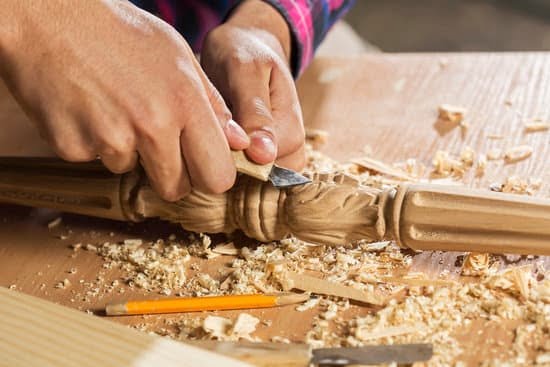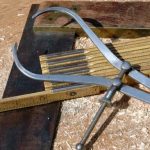Is pine good for woodwork? Woodworking enthusiasts and professionals often ask this question when considering the best type of wood for their projects. Pine is a popular choice due to its versatility, affordability, and unique characteristics that make it suitable for various woodworking applications.
Known for its distinct grain patterns and light color, pine is a preferred option for many craftsmen and DIYers. In this article, we will explore the characteristics of pine wood, the advantages and potential downsides of using pine in woodworking, different types of pine wood, practical tips for working with pine, and stunning examples of pine woodwork projects.
Pine wood is widely favored in woodworking due to its natural properties that make it an excellent material for a wide range of projects. It is lightweight, easy to work with, and readily available, making it ideal for both beginners and experienced woodworkers. Additionally, the rustic charm and warmth of pine make it well-suited for creating furniture, cabinetry, flooring, and other decorative elements in homes and commercial spaces.
In this article, we will delve into the characteristics of pine wood and compare it to other types of wood commonly used in woodworking. Understanding the unique attributes of pine will provide valuable insights into why it continues to be a popular choice among craftsmen. Whether you are considering using pine for your next project or simply want to expand your knowledge about woodworking materials, this article will offer comprehensive information on the topic.
Characteristics of Pine
Pine wood is a popular choice for woodworking due to its natural characteristics and versatility. Known for its light color and straight grain, pine is easily distinguishable from other types of wood. It is a softwood, meaning that it comes from coniferous trees such as pines, spruces, and firs. Pine is readily available and cost-effective compared to hardwoods, making it an attractive option for both amateur and professional woodworkers.
Natural Properties of Pine Wood
Pine wood typically has a pale yellow or light brown hue, with some varieties featuring knots and darker streaks for added visual interest. It is relatively lightweight and easy to work with, making it ideal for a wide range of woodworking projects. The softness of pine allows for easy cutting, shaping, and sanding, while also accepting stains and finishes well.
Comparison to Other Wood Types
Compared to hardwoods like oak or maple, pine is less dense and offers more flexibility in terms of design and construction. While hardwoods are prized for their durability and strength, pine’s softer nature can lend itself to creating furniture with intricate details or curved elements. Additionally, the affordability of pine makes it accessible to woodworkers of all skill levels.
Advantages of Using Pine in Woodwork
Pine wood is an excellent choice for a wide range of woodworking projects. Its popularity and versatility make it a top choice for both professional woodworkers and DIY enthusiasts. One of the key advantages of using pine in woodwork is its affordability. Compared to other hardwoods, pine is often more budget-friendly, making it an ideal option for those looking to create beautiful pieces without breaking the bank.
In addition to its cost-effectiveness, pine is also relatively lightweight, making it easier to work with compared to heavier woods. This feature is particularly advantageous for beginners or those who may not have access to heavy-duty woodworking tools. Furthermore, pine’s natural grain and knotty appearance add character and charm to woodworking projects, giving them a rustic and cozy aesthetic.
Another advantage of using pine in woodwork is its ease of staining and finishing. Pine readily accepts various finishes, including stains, paints, and sealants, allowing woodworkers to achieve their desired look with relative ease. This versatility makes pine suitable for a wide range of furniture styles and designs, from rustic farmhouse pieces to sleek modern creations.
| Advantages | Description |
|---|---|
| Affordability | Pine is often more budget-friendly compared to other hardwoods. |
| Lightweight | Pine is easier to work with due to its relatively lightweight nature. |
| Versatile Finishing | Pine readily accepts various finishes, including stains, paints, and sealants. |
Potential Downsides
Pine wood is undeniably popular and versatile when it comes to woodworking, but it is not without its limitations and challenges. In this section, we will take a closer look at some of the potential downsides of working with pine wood, including its susceptibility to damage, difficulty in staining, and cost considerations.
Susceptibility to Damage
One of the main drawbacks of using pine for woodwork is its relatively soft nature. This means that pine wood is more prone to dents, scratches, and other forms of damage compared to hardwoods like oak or maple. As a result, it may not be the best choice for high-traffic areas or pieces that are likely to endure heavy wear and tear.
Difficulty in Staining
Another challenge when working with pine wood is its uneven staining behavior. Due to its natural grain patterns and resinous areas, pine tends to absorb stains differently across the surface, leading to blotchy or inconsistent coloration. This can make achieving a uniform finish more challenging compared to other woods.
Cost Considerations
While pine wood is generally more affordable than other hardwoods, it is important to consider the overall cost when factoring in its potential downsides. For instance, the need for additional protective finishes or the possibility of having to replace damaged pieces could add up over time. Therefore, it’s essential to weigh the pros and cons before committing to a pine wood project.
Types of Pine Wood
Pine wood is a popular choice for woodworking due to its versatility and availability. There are several different varieties of pine, each with its own unique characteristics and suitability for various woodworking applications.
Here are some common types of pine wood and their potential uses in woodworking:
- White Pine: Known for its straight grain and lightweight nature, white pine is often used for interior trim, paneling, and furniture.
- Yellow Pine: More resilient and durable than white pine, yellow pine is commonly used for outdoor projects such as decking, fencing, and outdoor furniture.
- Ponderosa Pine: With its pronounced grain patterns and light color, ponderosa pine is frequently utilized for making rustic-style furniture and decorative accents.
Understanding the different types of pine wood is essential for selecting the right material for a woodworking project. Factors such as strength, appearance, and resistance to rot or insects should all be considered when choosing the appropriate type of pine for a specific application.
In addition to these common varieties, there are also specialty types of pine wood that may be suitable for more niche woodworking projects. By closely evaluating the characteristics and properties of each type of pine, woodworkers can make informed decisions about which variety best suits their needs. Ultimately, the type of pine used can have a significant impact on the final appearance, durability, and overall quality of a woodworking project.
Tips for Working With Pine
When it comes to woodworking, pine is a popular choice for many projects due to its versatility and affordability. Whether you are a seasoned woodworker or just starting out, there are some important tips to keep in mind when working with pine wood. Here are some practical advice and best practices to help you get the most out of your pine woodworking projects:
- Choose the right pine wood: Not all pine wood is created equal. Different varieties of pine have varying characteristics, so it’s important to choose the right type of pine for your specific project. For example, Eastern White Pine is known for its straight grain and soft texture, making it ideal for carving and intricate detailing, while Southern Yellow Pine is strong and durable, perfect for structural applications.
- Prevent splintering: Pine wood has a tendency to splinter more easily than other hardwoods, so it’s crucial to take precautions to minimize this. Using sharp tools and making light cuts can help prevent splintering, as well as using a backing board when cutting or drilling through pine.
- Stabilize the wood: Pine wood is known for its susceptibility to warping and twisting, especially when exposed to changes in humidity. To minimize this risk, it’s important to properly store and acclimate your pine lumber before starting a project. Storing it horizontally with spacers between boards can help prevent warping.
By keeping these tips in mind, you can make the most out of your pine woodworking projects and create beautiful pieces that showcase the natural beauty of this versatile wood. Whether you are building furniture, cabinets, or decorative items, understanding how to work with pine effectively will lead to successful woodworking projects that stand the test of time.
Examples of Pine Woodwork Projects
Pine wood is a popular choice for woodworking projects due to its versatility, affordability, and beautiful natural appearance. It is often used to create stunning furniture, cabinetry, and other woodworking creations that showcase the unique characteristics of this type of wood. Whether it’s a rustic farmhouse table, a set of elegant bookshelves, or a charming wooden chest, pine can be transformed into a wide range of attractive and functional pieces.
One of the key advantages of using pine in woodworking projects is its ease of workability. Pine is relatively soft compared to hardwoods, making it easier to cut, shape, and assemble. This makes it an excellent choice for both beginner and experienced woodworkers alike. Additionally, pine has a natural resistance to swelling and shrinking, which is beneficial for creating durable and long-lasting woodwork pieces.
Another benefit of using pine for woodwork is its ability to take on stains and finishes exceptionally well. This allows woodworkers to achieve a desired look or color for their projects, whether it’s a light natural finish that highlights the wood’s grain or a darker stain that adds richness and depth. The versatility of pine in accepting different finishes makes it an attractive option for those looking to customize their woodworking creations.
In addition to these advantages, pine woodwork projects often exude a warm and inviting aesthetic that adds character to any home or space. The use of knotty pine can add a charming rustic touch to furniture pieces, while clear pine can provide a clean and modern look. With proper care and maintenance, pine woodwork projects can withstand the test of time and continue to bring joy and functionality for years to come.
| Advantages of Pine Woodwork | Examples |
|---|---|
| Workability | Rustic farmhouse table |
| Accepts Finishes Well | Elegant bookshelves |
| Warm & Inviting Aesthetic | Charming wooden chest |
Conclusion
In conclusion, pine wood is a popular and versatile choice for woodworking projects. Its natural characteristics, such as its straight grain, light color, and ease of working with hand and power tools, make it an attractive option for both beginner and experienced woodworkers. The affordability of pine wood also makes it an appealing choice for budget-conscious individuals who want to create beautiful and functional pieces without breaking the bank.
While there are potential downsides to using pine in woodworking, such as its tendency to dent or scratch easily compared to harder woods, the advantages often outweigh these challenges. Pine’s ability to take stains and finishes well allows for customization and personalization in woodworking projects, while its availability in various types-such as Eastern white pine or ponderosa pine-provides options for different applications.
Ultimately, whether pine is good for woodwork depends on the specific project at hand and the preferences of the woodworker. With proper care and consideration of its characteristics, pine can be an excellent choice for creating stunning furniture, cabinetry, decorative items, or other woodworking creations. So if you’re wondering “Is pine good for woodwork,” the resounding answer is yes-it is a fantastic option for a wide range of projects.
Frequently Asked Questions
What Is the Disadvantage of Pine Wood?
The disadvantage of pine wood is that it is relatively soft compared to other types of wood, making it more prone to dents and scratches. It also has a tendency to yellow over time, which can affect its appearance.
Is Pine a Good Wood for Woodworking?
Pine can be a good wood for woodworking, especially for beginners or those on a budget. It is readily available, easy to work with, and can hold nails and screws well. However, its softness may limit its use for certain projects.
Can You Do Fine Woodworking With Pine?
Yes, it is possible to do fine woodworking with pine. While it may not be the first choice for intricate or high-end pieces due to its softness, pine can still be used to create beautiful furniture and detailed woodworking projects with the right techniques and finishes.

Hi everyone! I’m a woodworker and blogger, and this is my woodworking blog. In my blog, I share tips and tricks for woodworkers of all skill levels, as well as project ideas that you can try yourself.





